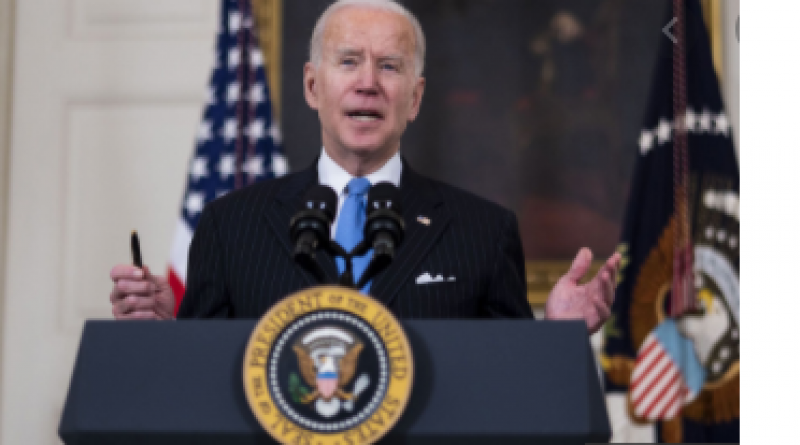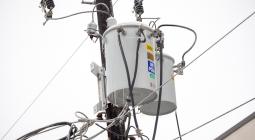Biden Is Betting His Whole Climate Agenda on Infrastructure.

With the latest round of stimulus, clean energy advocates have been told yet again that it’s not their turn.
Candidate Joe Biden rode into the White House promising to build back the economy after the devastation of Covid-19 with cleaner energy and a lower carbon footprint. The $1.9 trillion American Rescue Plan that President Biden signed into law today, however, does little in the way of fulfilling that pledge.
That makes this the sixth pandemic stimulus package in roughly 12 months to put off significant action on clean energy and climate change mitigation, yet another sign of what many advocates now conclude is an opportunity wasted. The White House and Democratic leadership in Congress have said that low-carbon energy policy is still very much on the agenda, but that they’re aiming to load much of that into an infrastructure bill the Biden administration will put forward next.
Dividing the two priorities is risky, however, because an infrastructure bill with a heavy emphasis on climate mitigation could be even more contentious than the stimulus package. Polls showed widespread enthusiasm for this round of relief, yet the bill garnered not a single GOP vote in either chamber.
“Democrats felt very clearly that it was important to move quickly on rescue and that the contents be logically connected to the Covid crisis,” said Benjamin Salisbury, director of research for Height Capital Markets, a firm that does policy analysis for institutional investors. “They estimated that the risk of slowing or disrupting the rescue bill by adding other priorities was greater than the risk of waiting.”
Sen. Sheldon Whitehouse—one of the strongest advocates for climate action among Democrats in Congress—called the upcoming infrastructure bill “our primary opportunity to move green priorities. Green infrastructure and low-carbon technologies have enormous potential to create jobs.” The White House didn’t respond to repeated requests for comment on the stimulus bill.
In 2009, with the nation in the midst of its deepest recession since the Great Depression, Congress passed the American Recovery and Reinvestment Act, which delivered an $840 billion capital infusion to the U.S. economy, including $90 billion for renewable energy and other climate-friendly businesses. That investment has been credited with driving a rapid expansion in the sector, led by federal loan recipients such as Tesla Inc., and the creation of 3.4 million jobs.
As vice president, Biden presided over the implementation of that legislation, and those who were on his staff at the time say that the program’s success inspired his campaign promises on clean energy and job creation.
The idea that Covid stimulus packages would provide a once-in-a-generation opportunity to also address climate change took hold early in the pandemic. But despite lofty rhetoric, a recent study from the University of Oxford and the United Nations Environment Programme found that of the $14.6 trillion in spending announced by the 50 largest economies in 2020, only 2.5% has been for green activities.
House Speaker Nancy Pelosi held off on putting investments in green infrastructure into two relief bills last spring, especially given then-President Donald Trump’s hostile posture toward clean energy. The stimulus bill passed in December is the only one to include major gains on climate, including an extension of tax credits for wind and solar projects and $35 billion in new spending on energy research and development programs. That measure also directed the Interior Department to allow more renewables on public lands and included an agreement to phase out hydrofluorocarbons, chemicals used in refrigeration and air conditioning that contribute to global warming.
Even that fell far short of the comprehensive investment in infrastructure and new clean power generation that would allow American to transition to a carbon-free electrical grid, a goal Biden has promised to achieve by 2035. A June 2020 study from the University of California at Berkeley and GridLab, an energy consultancy, estimated it would take $100 billion in investments in transmission infrastructure alone to get the grid to 90% carbon-free electricity by 2035. Once completed, that would result in wholesale electricity costs 13% lower than today.
The power failures during February’s winter storm in Texas reignited calls from progressives for Congress and the White House to follow through on creating sustainable infrastructure. The devastation “highlights the need to transition to a renewable energy economy while investing in infrastructure and our communities,” tweeted Rep. Pramila Jayapal, chair of the Congressional Progressive Caucus, in late February.
Many environmental advocates point out that the new stimulus package isn’t entirely devoid of upside for the climate. It includes $100 million for the Environmental Protection Agency—half for environmental justice grants and activities to help communities disproportionately burdened by pollution, and half for air quality monitoring grants and other purposes. There’s also more than $30 billion for mass transit systems that have seen ridership and revenue collapse amid the pandemic, plus an additional $1.7 billion for Amtrak.
That’s “enormously important” from a climate perspective, said J. Peter Byrne, faculty director of the Georgetown Climate Resource Center, an event for the university’s law school on Tuesday. “When we go back to traveling, we need to be attracted to public transportation in order to reduce emissions,” Byrne said.
Kevin Book, an energy analyst with investor research firm ClearView Energy Partners, said that the fiery partisan opposition to the Green New Deal explains Pelosi’s decision to punt again on including significant new energy transition funding. “Energy has become so polarizing that they had to leave it out” if they wanted stimulus to move swiftly, he said.
In spite of this latest missed opportunity, clean-energy advocates remain in lock-step with the administration’s strategy—largely, they say in private, because they have no alternative.
A coalition of nearly a dozen environmental advocacy groups, including the Natural Resources Defense Council, the Environmental Defense Fund, and the Sierra Club sent a letter to senators earlier this month supporting the stimulus bill that now awaits Biden’s signature. But they also emphasized that the legislation was just a “first step” in the process of making the U.S. economy “stronger, more equitable, and more sustainable.”
— With assistance by Jennifer A Dlouhy, and Akshat Rathi
11 March 2021
Bloomberg Green




